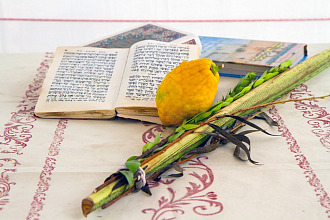A Jewish biblical garden is a great way to express your faith while creating a beautiful place for your family or community. Find out about creating Jewish Torah gardens in this article...
Jewish Garden Plants
The selection of Jewish garden plants centers around the Seven Species listed in Deuteronomy 8:8 which include: wheat, barley, figs, grapevines, pomegranates, olives and date palm honey.
•Wheat and barley are two essential grains that provided bread, food for livestock, and chaff for fuel... If you don't have room for a field of grains, tuck in a little wheat here and there as you would ornamental grasses.
•Figs and fig trees symbolize peace and prosperity. The fruit can be eaten fresh or dried and stored, and the leaves are used to make a number of household items including umbrellas, dishes and baskets.
•Grapevines provided shade for people and animals, food in the form of fresh grapes and raisins, and wine. The vines symbolize bounty. Images of grapevines appear on coins, pottery, portals of synagogues and tombstones.
•Pomegranate trees are pretty enough to use as a focal point in the garden... Pomegranate designs were used to decorate religious garments of the high priests, and you'll sometimes see them on the decorative tops of torah rollers.
•Olives were grown throughout the holy land. They can be pressed to extract the oil or soaked in brine as a traditional food. Olive oil was used in medicines, as a base for perfumes, as a lamp oil and in cooking.
•Date palms produce a tasty fruit... A date palm frond can grow as much as 20 feet long. Deuteronomy specifies the honey made from date palm trees.
These Seven Species have sustained the Jewish people throughout history...


























